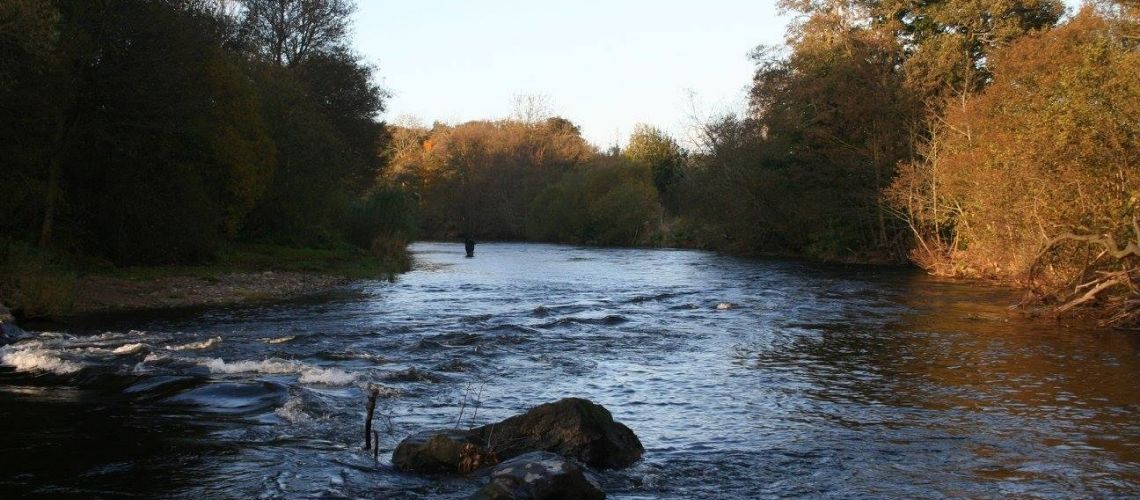What is fly fishing
Fly fishing has a special appeal to many people whether they are young old man or women, because it’s artistic, relaxing, fun and exciting, and it is a great way to connect with nature.
Fly fishing gets its name from the lures used. They’re referred to as ‘flies’ because they’re made to imitate small insects or prey items that a fish may want to eat. Flies are usually made out of materials like yarn, sewing thread, feathers, fur, and a single hook. Flies also range in size from as small as a grain of rice to the size of a 10-inch fish.

The history of fly fishing
Next, we look at the origins of fly fishing, and help explain why this outdoor activity has been steadily increasing in popularity. Fly fishing has been around quite some time. It began in the Middle Ages, but people noticed fish eating small bugs, they were tough to keep on the hook as bait. Early fly fishers didn’t do much casting and didn’t use a fly fishing reel, their method were very similar to a Japanese method of fishing called Tenkara fly fishing which has become increasingly popular all around the world.
At the end of 19th century and into 20th century, fly rods got better and fly anglers learn to cast longer distances and they add fly fishing reels to store line, they also began catching bigger fish that would make long runs, this new equipment helped increase the interest of fly fishing. And in the second half of 20th century, fly fishing became more popular with everyone from presidents to movie stars to ordinary anglers who were looking for more of a challenge when they were fishing, fly fishing was suddenly the new and exciting way to catch, best of all sport expanded to being just for trout to saltwater fish and warm water species like bass and pike.
At the American Museum of Manchester Vermont, the history of fly fishing is well chronicled, if you get the chance to visit the region, I highly recommend you to spend some time in the museum, it is really fascinating, all this old equipment is really neat to see but what do you really need today to get started in fly fishing.
How to fly fish
Fly fishing is easy, anyone can do it, you just have to learn the basics. But some people believe fly fishing is really technical and far to difficult to learn. Nothing could be further from the truth, it’s really quite simple to master, anyone can learn fly fish, the best way to start is on a local pond filled with small bass or sunfish. Remember that the best way to learn is through practice.
Fly fishing is all about rhythm. Finding the right rhythm and movement is the key to casting a fly rod. The mechanics of casting can be broken down into several steps.
An easy way to learn how to cast a fly rod is to picture the movements of your arm on a clock. When your arm is in the neutral position (when it’s up and directly in line with your body), it’s at 12 o’clock. When your arm is forward during your cast, it should be at 10 o’clock. During your back cast, your arm should be at 2 o’clock. By keeping you arm in this small window of movement, you’ll be able to have both control and power in your casts.
To start your cast, let out about one rod length of the colored fly line. You only need to hold the rod with one hand - keep the other hand free to help manage your line. Start your cast by slowly swinging the rod behind you, in the 2 o’clock position. Keep the rod tip up, and once the rod tip gets just past your shoulder, at 10 o’clock, make your forward cast in one smooth, continuous motion letting the line rest on top of the water
Be careful not to use the rod like a whip - any casts that are too sudden and sharp will cause the fly to snap off from the leader, or scare away any potential catches.
When you’re casting you can let more line out. This will help get your fly further out onto the water and closer to the fish. To make your line longer during a cast, pull some line from the fly fishing reel in between casts.
When you make your cast, bring the rod forward and backward several times like you would normally cast, but don’t let the fly hit the water. This is called false casting. Practice your false cast several times to find the right rhythm. Once you have a rhythm, get ready to let more line out. To let more line out, hold the excess line in your other hand and keep some tension on it. As you make your forward cast, let go of some excess line. The momentum of the cast will bring the line out and make the line go further out. Repeat this process until your line is as long as you want it.
If a fish bites your fly, be ready to set the hook! Setting the hook when a fish bites helps keep the fish on your line. There are two ways to set the hook when fly fishing - a convex (rod) set or a strip set. A convex set means you pull back on the rod in a sudden, hard motion once the fish takes your fly. A strip set is when you pull on the line with your free hand once a fish bites your fly. The strip set is done with a single, hard tug on the line while keeping the rod motionless.










